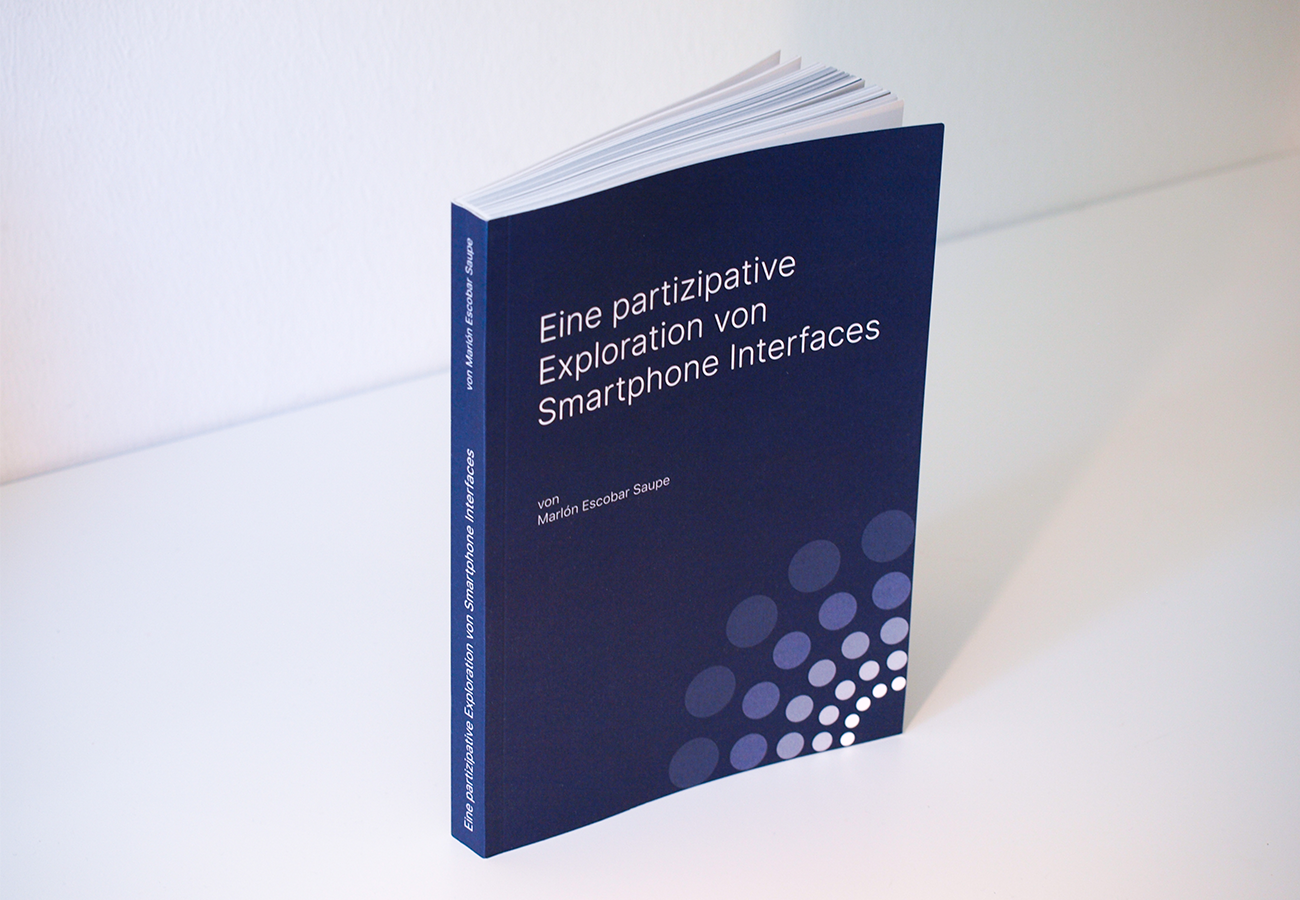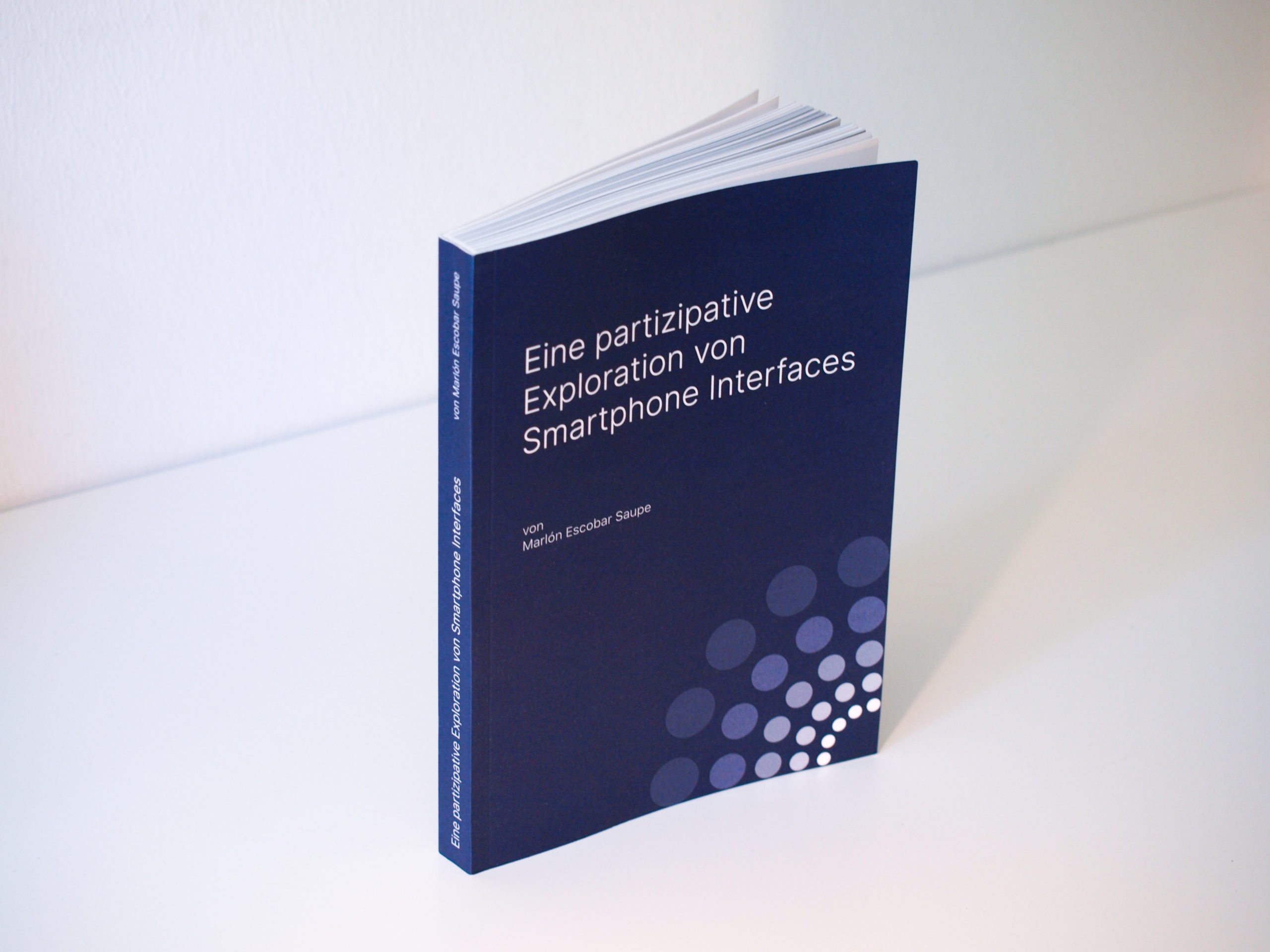
Eine partizipative Exploration von Smartphone Interfaces - Bachelor Thesis:
This bachelor thesis comprises an explorative and participatory design process, an interface design of a smartphone homescreen as well as a documentation of the entire work in the form of a book. My research question was: 1: How can a concept for a smartphone homescreen, which allows one-handed operation and personalisation of the displayed apps, be further developed and designed if it is supported by the participative and explorative design process? Within two research phases, a new concept will be developed using participants, participative methods, scientific literature and an initial concept as a source of inspiration, which will meet the requirements and needs of the users.
The foundation of this work is the examination of various scientific literature in the research areas of participatory design1 , exploration2 , app prediction and one hand operation of smartphones.
One hand operation approaches such as „Back of Device“3 or Reachability4 were considered. Various prediction models were examined5 and many other studies about user behavior were chosen as inspiration. At the same time „Orbit Angle UI“ served as a starting concept and source of inspiration.
Based on this foundation I developed methods and thus designed the two research phases.
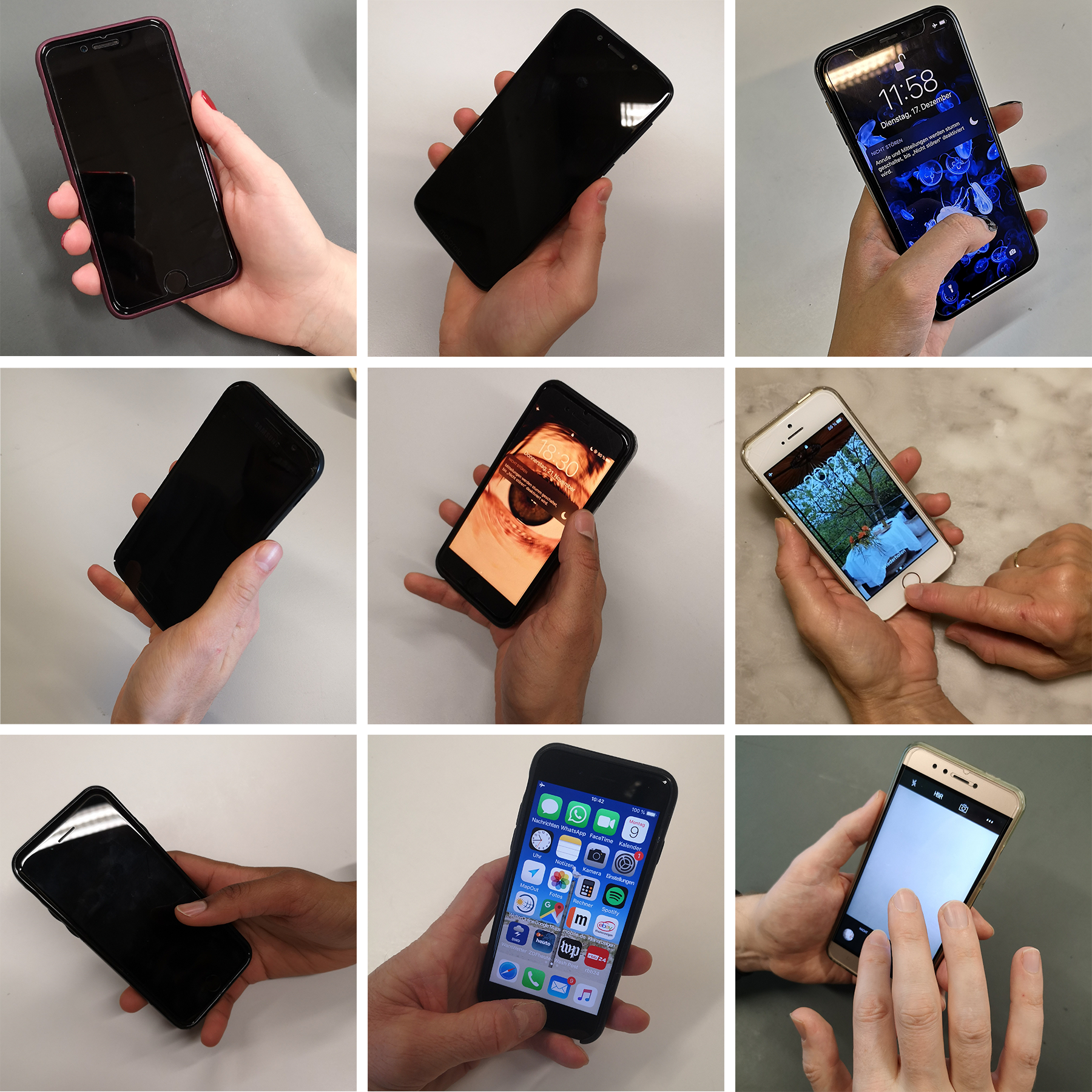
In the first research phase – the investigation – the alternative homescreen prototype was evaluated with participants in connection with established and familiar homescreens. An interview was conducted to gather the participants‘ impressions of the concept. By means of an explorative procedure based on the Grounded Theory, these impressions were evaluated and compiled into a collection of user requirements for the concept. This revealed the core problem of the concept: the spontaneous use of apps.
In the second research phase, four of the participants were invited to join a redesign group as co-designers. In this workshop they intensively worked out solutions for spontaneous app use. The collaborative work resulted in an affinity diagram containing ideas, contexts and concrete implementation approaches. A large part of the concrete implementation ideas were directly incorporated into the interface design, others were used as a source of inspiration.
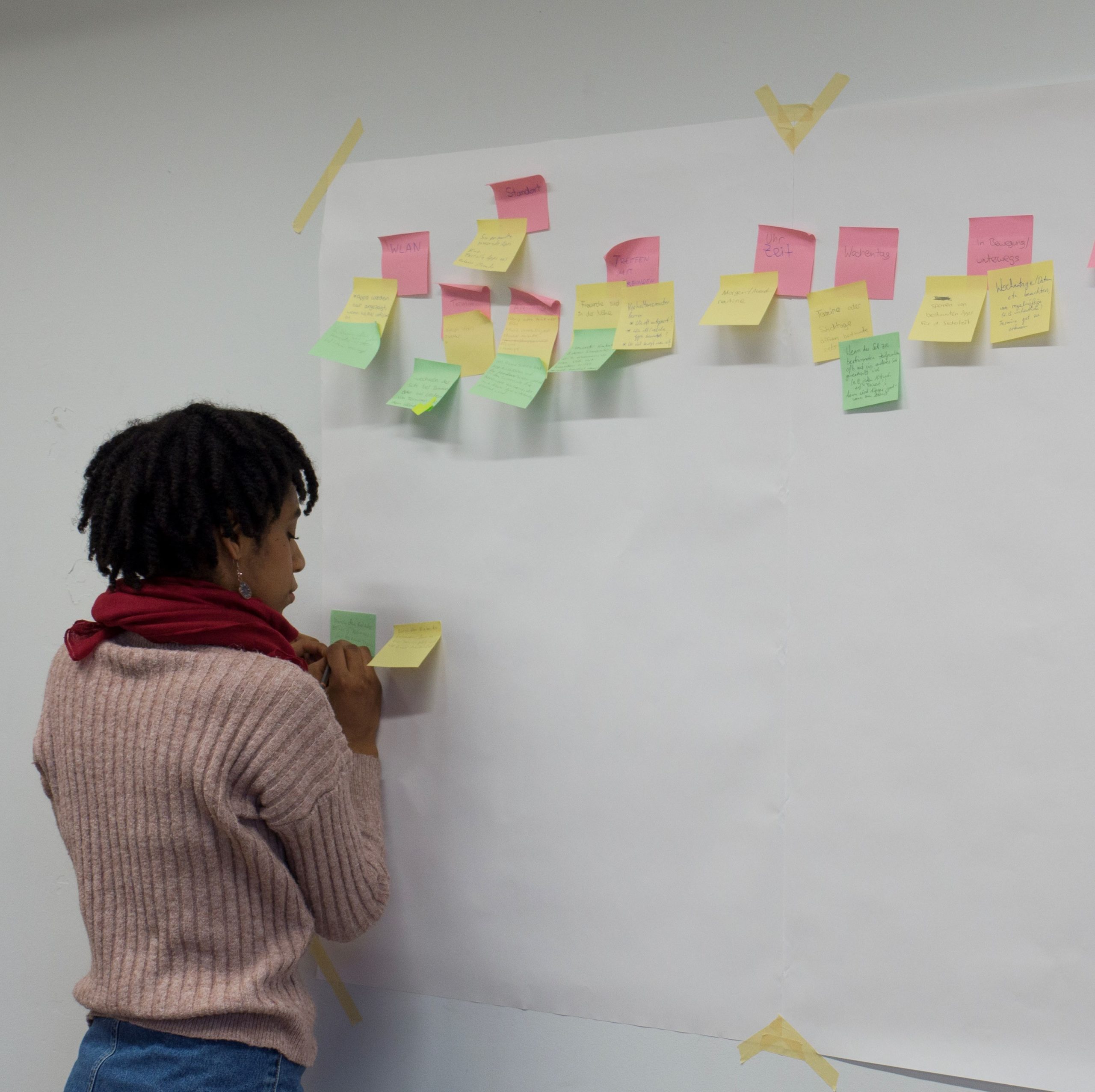
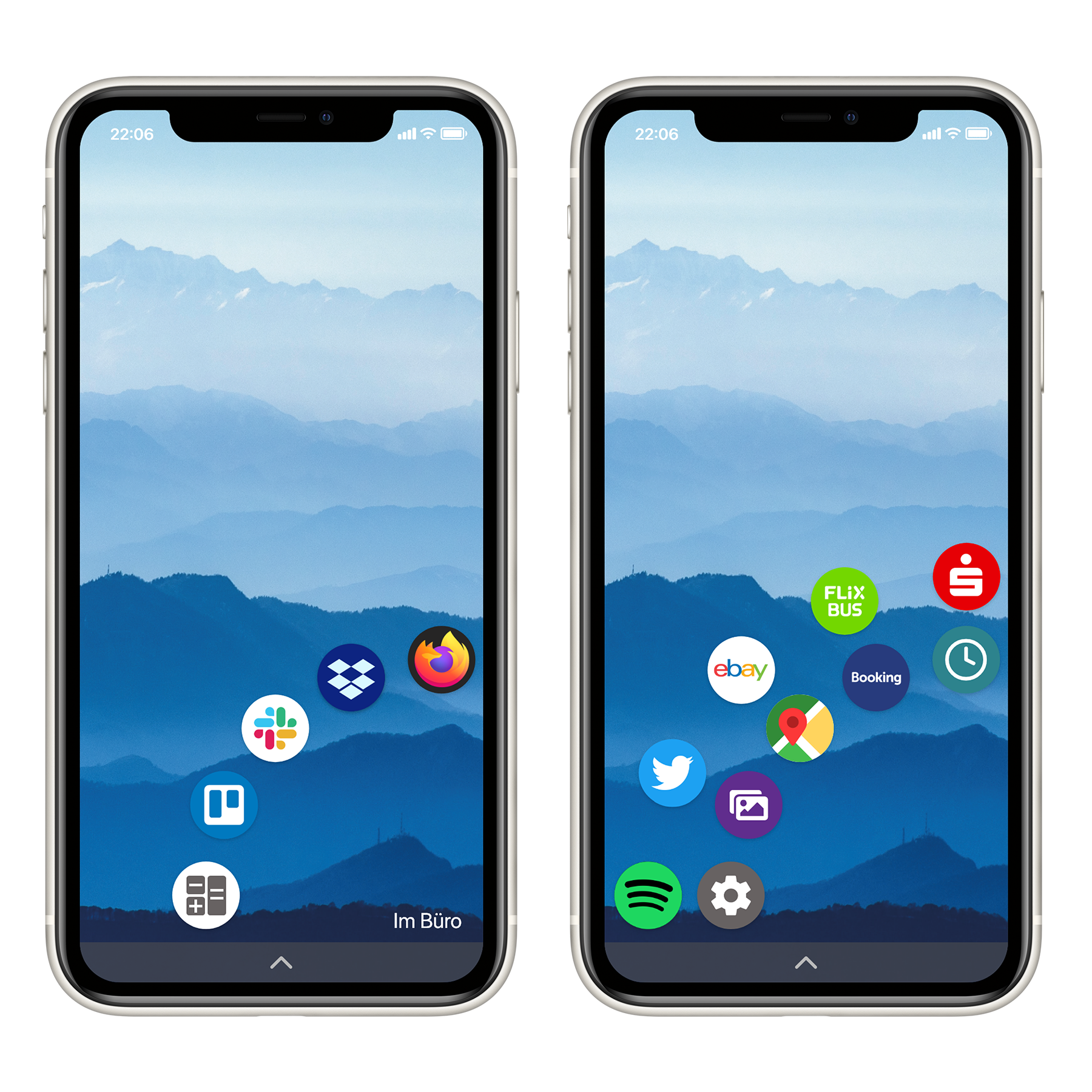
The results of both research phases were used to develop a new concept that enables one-handed operation and personalisation of the displayed apps. This was visualised by me in a dynamic interface design. In the home screen, apps are arranged in an arc so that they can be reached with the thumb. This enables one-handed operation. Here the focus is especially on individuality. Thus, the operating area can be adapted to the hand position and hand size. At the same time, it automatically recognises which hand is used to operate the smartphone in order to align the operating area accordingly. Further apps are displayed by rotating. For quick access to certain apps there is a static menu bar which can be folded out.
The dynamic part of the interface is created by the fact that the first ten apps on the home screen belong to a set that automatically exchanges information depending on the user’s situation. This means that only one set is active on the homescreen at a time. Other sets are activated by contexts of the situation the user experiences. For this there are contextual variables such as time period, weekdays, routines, location, WLAN and movement. The system can analyse the behaviour of the user if desired and thus optimise the selection of apps, predict the next app or adapt the active app set to the current situation. These many configuration options are managed within one app, which can also be linked to calendar apps to manage the sets even more precisely.
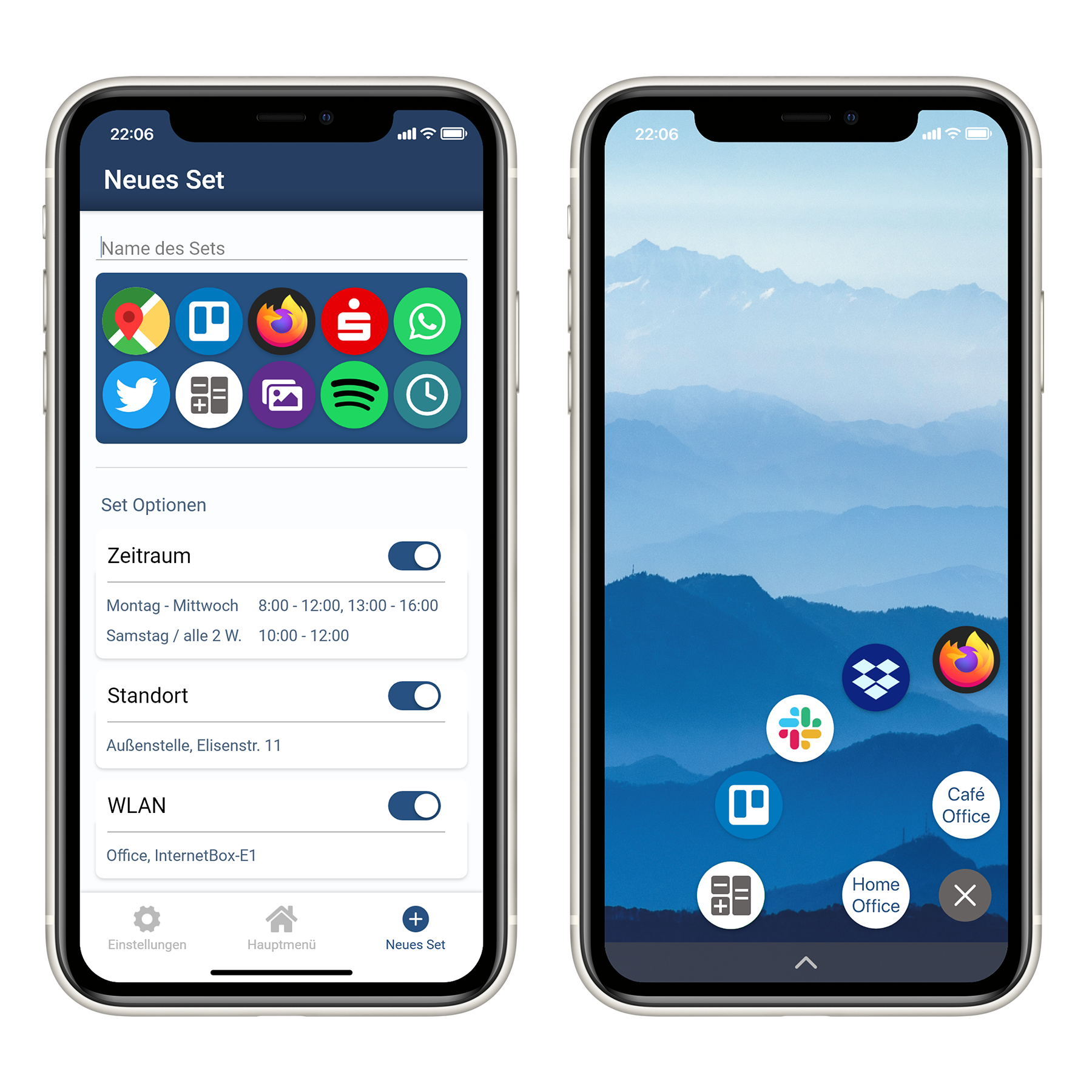
The new concept reveals itself as a deepening and broadening design of the initial concept. For the research area of one hand operation, it is clear that ergonomics and flexibility play a central role. With regard to app prediction, the control of the user over the prediction model is crucial. This work shows that explorative and participatory design proves to be extremely valuable in the further development of a smartphone homescreen concept with user orientation. Thus, this work has produced many more approaches that have not been incorporated into the interface design or the new concept, but could still serve as a starting point for further research or as inspiration for future designs.
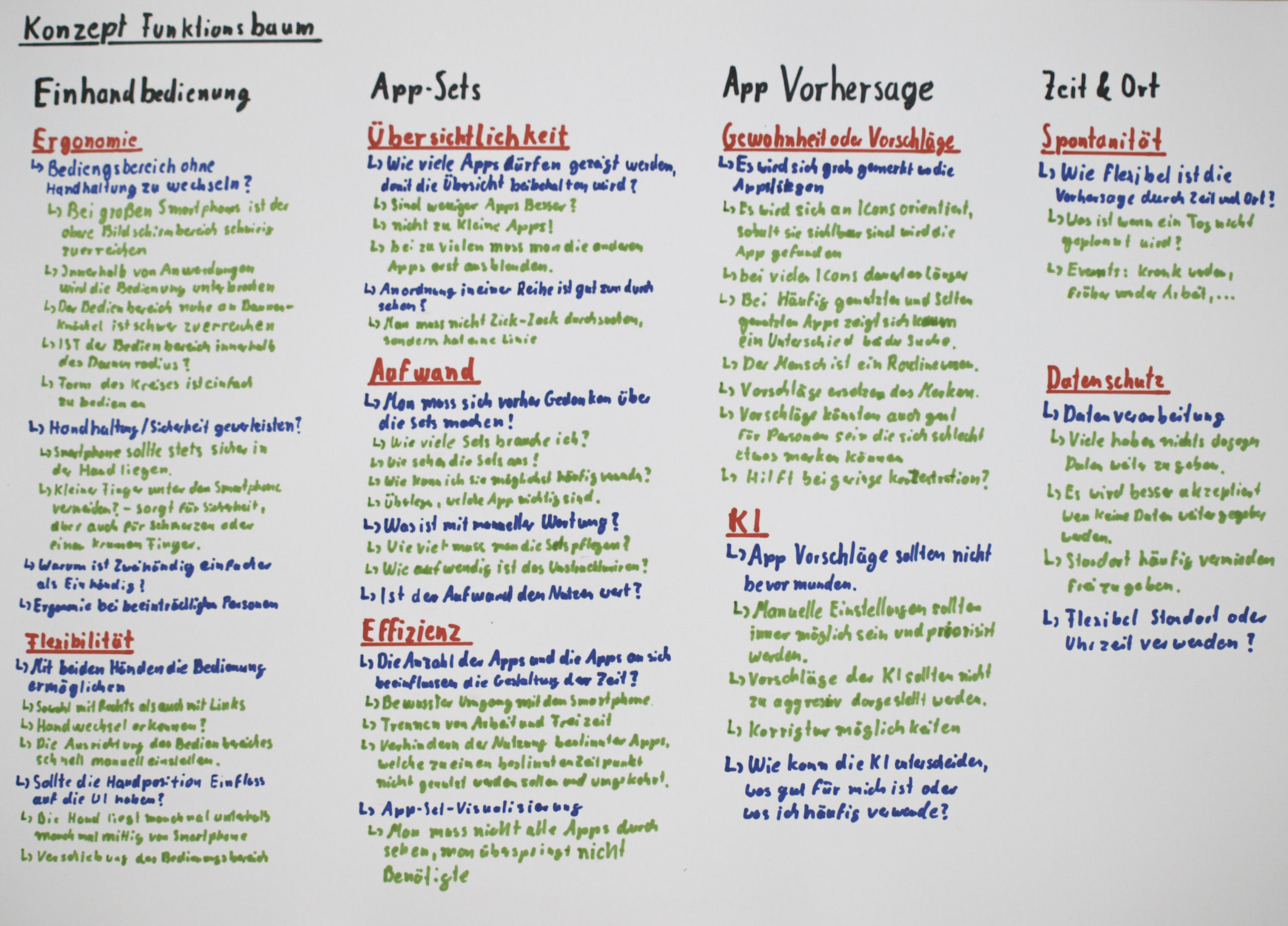
The new concept reveals itself as a deepening and broadening design of the initial concept. For the research area of one hand operation, it is clear that ergonomics and flexibility play a central role. With regard to app prediction, the control of the user over the prediction model is crucial. This work shows that explorative and participatory design proves to be extremely valuable in the further development of a smartphone homescreen concept with user orientation. Thus, this work has produced many more approaches that have not been incorporated into the interface design or the new concept, but could still serve as a starting point for further research or as inspiration for future designs.
1 Sanders, E. B.-N., & Stappers, P. J. (2008). Co-creation and the new landscapes of design. CoDesign, 4(1), S. 5–18. https://doi.org/10.1080/15710880701875068 2 Stebbins, R. (2001). Exploratory Research in the Social Sciences. SAGE Publications, Inc. https://doi.org/10.4135/9781412984249 3 Le, H. V., Mayer, S., Bader, P., & Henze, N. (2018). Fingers’ Ran- ge and Comfortable Area for One-Handed Smartphone Inte- rac-tion Beyond the Touchscreen. Proceedings of the 2018 CHI Conference on Human Factors in Computing Systems – CHI ’18, S. 1–12. https://doi.org/10.1145/3173574.3173605 4 Apple Inc. (2020). I Phone User Guide iOS 13.5. Zugriff am 16.06.2020 unter https://support.apple.com/de-de/guide/iphone/welcome/ios 5 Cao, H., & Lin, M. (2017). Mining smartphone data for app usa- ge prediction and recommendations: A survey. Pervasive and Mobile Computing, 37, S. 1–22. https://doi.org/10.1016/j. pmcj.2017.01.007

